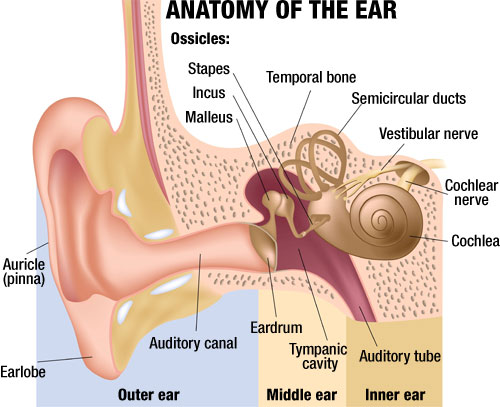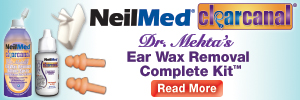Acute Otitis Externa (Swimmer’s Ear)
 |
Ryan S. Jackson, MD Fellow in Head and Neck Oncology |
Acute otitis externa (AOE) is commonly referred to as “swimmer’s ear.” AOE is an inflammatory disease of the external auditory canal and may extend to the pinna itself. As its name states, it occurs acutely with an onset of 48 hours. It is characterized by pain, itching and sometimes thickening of the skin around the ear canal. If the thickening is severe enough, patients may complain of decreased or muffled hearing. Some patients also have redness of the skin and drainage from the ear canal.

The cause of AOE is multifactorial. Most cases of AOE are caused by a bacterial infection (most commonly Pseudomonas aeruginosa and Staphylococcus aureus) in the setting of certain patient factors. For example, cerumen (ear wax) is a natural barrier to infections of the ear canal and frequent ear cleaning and cerumen removal may actually increase the risk of AOE. In addition, a moist environment (swimming, sweating, high humidity, hearing aid use) can also increase the risk of AOE.
If AOE is suspected, it is important to be examined by your primary care physician or otolaryngologist (ear nose and throat physician) to ensure there are no other causes for the symptoms. The diagnosis can be made by the patient history and physical examination in the physician’s office.
Once the diagnosis is confirmed, the mainstay of treatment is the application of topical antimicrobial medication in the form of ear drops. Oral antibiotics are not recommended as first line treatment for uncomplicated AOE unless the treating physician believes there are reasons to prescribe such medication. The type of ear drop prescribed depends on multiple factors, such as allergies to medications, tympanic membrane perforations or the presence of ear tubes. If there is significant debris in the ear canal, cleaning by a trained professional may be indicated. If the inflammation is significantly reducing the diameter of the ear canal, thus making it difficult to apply ear drops, the physician may recommend placing an ear wick. This is a very small piece of expanding material that allows adequate delivery of ear drops to the entire ear canal.
It is also important, but often overlooked; to recognize that pain management is a significant aspect of the treatment of AOE. The otalgia associated with AOE may be the only symptom and can often be managed with over the counter analgesic medications.
Check out Walmart pharmacy products.
For more information, the American Academy of Otolaryngology – Had and Neck Surgery has published clinical practice guidelines for the treatment of AOE as well as a patient instruction sheet on the application of ear drops that can be found on their website (https://www.entnet.org/?q=node/332).
 Intended for EAR HYGIENE: cleaning of debris, itch relief, exfoliation, water extraction, and superficial wax around the ear and outer ear canal. |
 NeilMed Clearcanal – Dr. Mehta’s ear wax removal complete kit |
(2654)
Joseph Shellhaas liked this on Facebook.
Carl Farris liked this on Facebook.
Carroll Ballenger liked this on Facebook.
Carroll Ballenger liked this on Facebook.
Joseph Shellhaas liked this on Facebook.
Carl Farris liked this on Facebook.